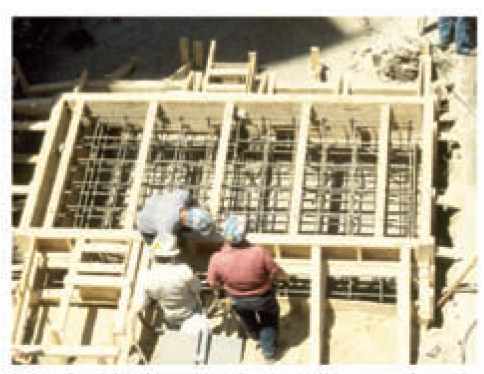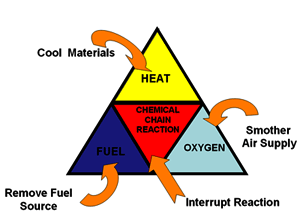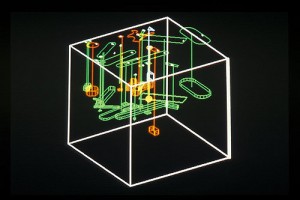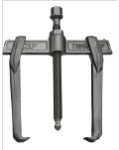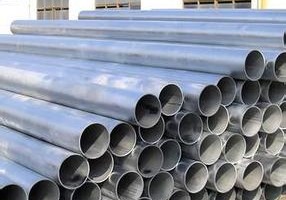Pump foundation
Proper pump foundation reduces vibration levels, which in turn leads to a significant increase in Mean Time Between Failures (MTBF), extended lifetime of mechanical seals and bearings and consequently reduced total life cycle cost.
Pumps have to be properly secured to their base plates, which in turn have to be well-bonded to the underlying foundation. Nowadays, this bonding is usually achieved with the use of epoxy grout.
There is however one exception to this rule. This exception refers to the vertical in-line pumps: these pumps must not generally be bolted to the foundation. Instead, they are usually given the possibility to float or slide in the x and y directions. This way, they can easily react to thermal movement of the interconnected piping.
Experience has shown that as a rule of thumb, the foundation mass of horizontal pumps is typically three to five times the mass of the pump and its motor. On the other hand, for vertical in-line pumps, the foundation mass does not usually exceed two times the overall mass of pump-motor set.
Pump baseplates: The traditional approach
Quite often, alignment screws (jacking tabs or bolts) are provided at the motor's feet. Delicate driver alignment movements can be made with the use of these jacking bolts. Once these movements are done, the entire tab is removed. If these tabs are left tightened against the motor feet, experience has shown that the dissipated motor heat may sometimes lead to the distortion of the motor casing.
In order to guarantee level mounting of the entire pump-motor set, the pump-motor baseplate (a common baseplate for the entire pump-motor set is mostly applied for horizontal pumps and their drivers) is placed on a foundation into which anchor bolts are encased during the pouring of the reinforced concrete foundation. These anchor bolts are usually provided with sleeves. The role of the sleeves is to prevent the ingress of grout and cater for differing amounts of thermal expansion or contraction of the concrete foundation compared to that of the metal base plate.
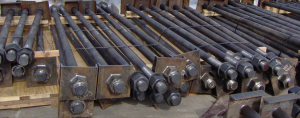
Levelling screws are then used, together with laser precision alignment tool or precision alignment indicators. With these tools, the baseplate mounting pads are brought into flat and parallel condition side to side, end to end as well as diagonally, all within very tight accuracy. Then, the nuts engaging the anchor bolts are secured and the empty spaces within the base plate as well as the space between the baseplate and foundation are filled with epoxy grout.
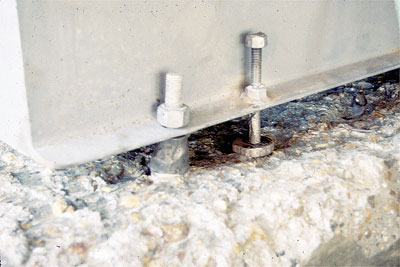
The traditional approach followed for bonding the baseplate to the foundation is by building a liquid-tight wooden formwork around the perimeter of the foundation and then proceed to fill the void with either a cement-based product or an epoxy grout.
It is to be noted that conventional baseplates have to be installed and grouted on foundation with pump and motor removed. Only then should pump and motor be installed and aligned.
Epoxy-prefilled base plates: The modern approach
During the past years, the use of all-in one, epoxy-prefilled (pre-grouted) base plates has gained momentum, mostly for sizes around 1.5 m * 2.5 m and conventional grouting procedures briefly described above are slowly starting to be phased out. Larger sizes of epoxy-prefilled baseplates are problematic for the time being due to their considerably bigger weight.
Prefilling comes with several advantages. A conventionally grouted base plate usually requires two pours, plus additional time and manhours spent for repair-filling of any voids once the grout has cured. On the other hand, pre-filled or pre-grouted baseplates arrive at site already flat and aligned. Their structural integrity is also better since no grout holes are necessary. Summing up, their installation costs are significantly reduced and their long-term reliability greatly enhanced, since these pre-filled base plates form a solid block that will never distort of get misaligned. However, even with pre-filled baseplates, some typical installation checks at site (flatness, coplanarity and colinearity checks) have to be carried out in order to determine if the pre-filled baseplate has been properly machined.
Contrary to conventional baseplated, it is to be noted that epoxy-prefilled baseplates can be installed and grouted on a foundation with the pump and motor already aligned and installed down on the baseplate.
